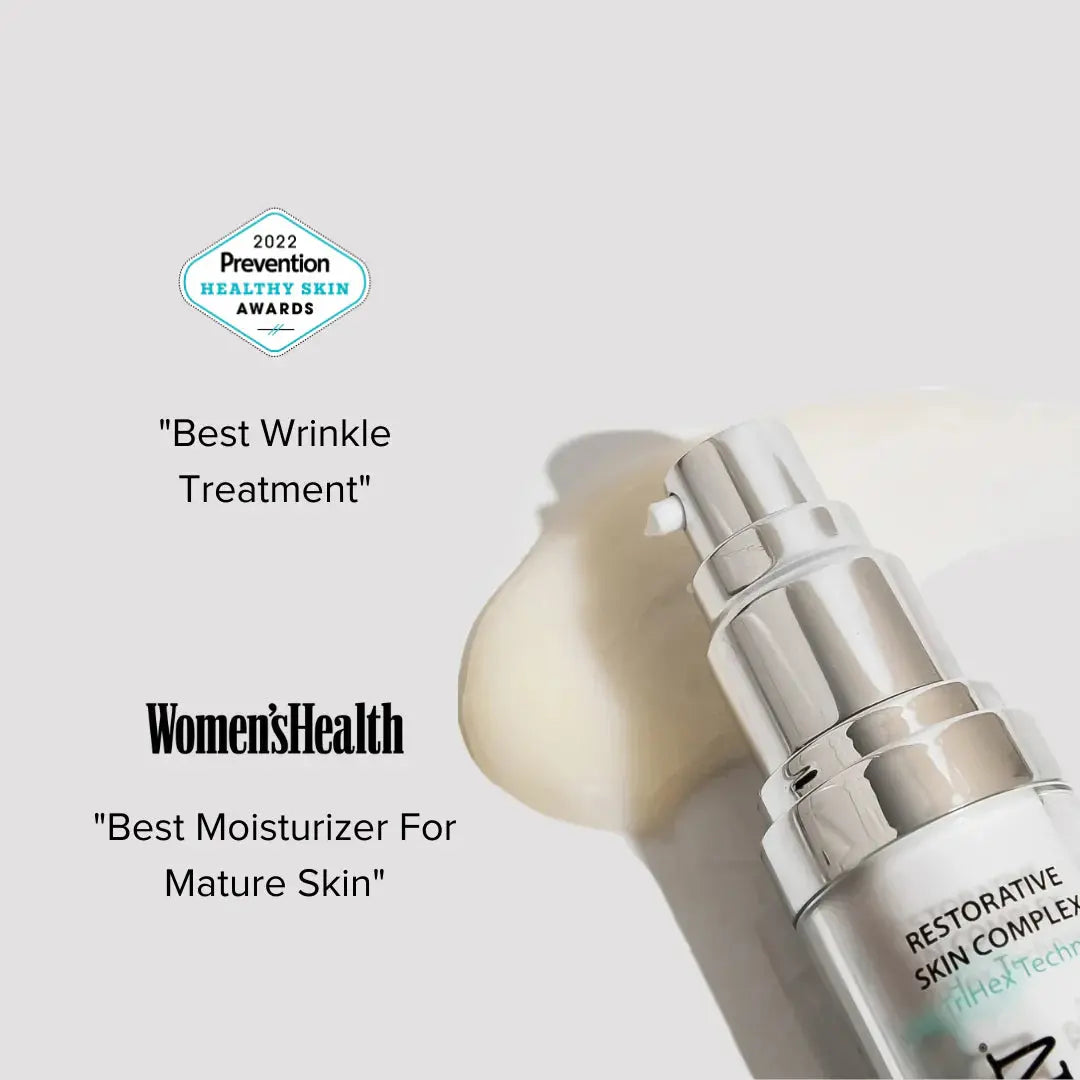
Ceramides vs. Peptides: What They Do for Your Skin—and When Surgery Is the Better Solution
The Two MVPs of Skin Health: Ceramides vs Peptides
Your skin’s health and appearance depend on more than just daily moisturizer. Ceramides and peptides —two powerhouse ingredient categories—are essential for barrier function, hydration, and signaling the skin to repair itself. But while they can make a dramatic difference in texture, tone, and firmness, they aren’t magic bullets for every concern.
One area where confusion often comes in? The fat layer beneath the skin . This subcutaneous layer plays a huge role in youthful contours, but its preservation and restoration require a different strategy altogether.


Ceramides: Your Barrier’s Best Friend
Ceramides are lipids (fats) that make up more than half of your skin’s outer layer (stratum corneum). Think of them as the grout that holds your skin cells together—keeping water in and irritants out.
What Ceramides Do:
-
Strengthen the skin barrier
-
Prevent water loss
-
Reduce irritation and sensitivity
-
Create a healthy environment for collagen and elastin production
What Ceramides Don’t Do:
-
They do not restore lost fat volume in the face. However, by reducing inflammation and strengthening the skin’s defense system, they can slow the rate of volume-related aging.
Peptides: The Skin’s Messengers
Peptides are short chains of amino acids that act like text messages to your skin cells—telling them to do things like produce more collagen, strengthen elastin, or calm inflammation.
What Peptides Do:
-
Stimulate collagen and elastin production
-
Improve firmness and elasticity
-
Support wound healing
-
Target fine lines and wrinkles
What Peptides Don’t Do:
Peptides won’t directly increase facial fat. Certain peptide blends (like Alastin’s TriHex Technology®) can maintain the scaffolding that supports the fat layer, slowing visible volume loss.
Peptide formulations from some of our favorite brands
Neocutis Lumière Firm Riche
Lumière Firm Riche is powered by PSP® (Processed Skin Cell Proteins) —a proprietary blend of peptides, growth factors, and matrix proteins that work synergistically to support dermal regeneration. The peptides in this formulation stimulate fibroblasts to produce new collagen and elastin, while growth factors accelerate cellular repair in delicate under-eye skin. Added emollients and hydrating agents help reinforce the skin barrier, making the thin periorbital area more resilient to creasing, puffiness, and discoloration. This dual-action approach not only improves the visible firmness of the under-eye contour but also strengthens the structural integrity of the tissue over time.
Revision Skincare Revox™ Line Relaxer
Revox™ Line Relaxer contains eight clinically studied peptides , each targeting a different mechanism of wrinkle formation. This includes neuropeptides that help reduce muscle contraction intensity (ideal for expression lines), signal peptides that stimulate collagen synthesis, and carrier peptides that deliver essential trace minerals to the skin for enzymatic repair processes. The result is a comprehensive, multi-pathway approach to line smoothing. When used in combination with neuromodulator treatments like Botox®, Revox amplifies and prolongs wrinkle-relaxing effects, providing a smoother surface and delaying the reappearance of dynamic lines.
Alastin Ultra Nourishing Moisturizer
Alastin’s Restorative Skin Complex® utilizes TriHex Technology® , a patented peptide blend that focuses on clearing away damaged fragments of collagen and elastin from the dermal matrix—a process known as proteolytic remodeling . By removing this dysfunctional tissue, the peptides signal the skin to produce new, healthy collagen and elastin, restoring the supportive “scaffolding” that maintains skin’s structure. This regenerative action improves elasticity, firmness, and the skin’s ability to retain volume in the overlying layers. Clinical studies show that patients using TriHex peptides before and after in-office procedures see faster recovery and more pronounced results.
SkinMedica TNS® Advanced+ Serum
SkinMedica’s TNS® Advanced+ Serum combines growth factors with signal peptides in a dual-chamber system designed to target both the epidermis and the dermis. The first chamber contains TNS-MR™, a next-generation growth factor blend that enhances fibroblast activity for collagen and elastin production, while the second chamber houses a peptide-rich formula with Renessence (MR) Technology to support epidermal cell turnover and barrier repair. Over 12 weeks, clinical trials have shown significant improvements in coarse wrinkles, skin laxity, and overall tone uniformity. The multi-layer approach makes this serum particularly effective for comprehensive anti-aging benefits, addressing both surface and structural skin concerns simultaneously.
The Fat Layer Question: Can Skincare Really Plump Lost Volume?
Short answer: No topical product can physically rebuild the fat layer once it’s lost.
Ceramides help protect it indirectly by keeping skin healthy, and peptides support the dermal framework that sits above it—but they cannot regenerate fat cells.
Dr. Rocco Piazza: “I tell my patients to think of skincare as protection and optimization—not as a replacement for volume restoration. Ceramides and peptides keep the skin in peak condition so when we use fillers, biostimulators, or fat grafting, the results look better and last longer.”

When Surgical or Regenerative Procedures Are Needed
If you’ve noticed significant hollowing in the cheeks, under-eyes, or temples, that’s usually a sign of fat layer depletion—and that’s where in-clinic treatments come in:
Fat Grafting – Transfers your own fat from one area to another for natural, lasting volume.
Microneedling with Exosomes – Tightens skin while stimulating collagen and elastin in deeper layers.
Frequently Asked Questions
1. What are peptides and how do they work in skincare?
Peptides are short chains of amino acids — the building blocks of proteins like collagen, elastin, and keratin. In skincare, they act as “messengers,” signaling your skin to produce more of these structural proteins, leading to firmer, smoother, and healthier-looking skin.
2. What skin concerns can peptides help improve?
Peptides can target multiple concerns, including fine lines and wrinkles, loss of firmness, rough texture, dullness, redness, and weakened skin barrier. Some peptides are designed to calm irritation, while others stimulate collagen and elastin production for anti-aging benefits.
3. How are peptides different from growth factors?
While peptides are short chains of amino acids that signal your skin to act, growth factors are naturally occurring proteins that directly stimulate cell growth and repair. Both can improve skin health, but growth factors tend to have a more regenerative effect, while peptides focus on signaling and strengthening.
4. Can peptides be used with retinol, vitamin C, or exfoliating acids?
Yes. Peptides are generally non-irritating and pair well with most active ingredients. Using peptides alongside retinol or vitamin C can enhance results — retinol speeds cell turnover, vitamin C boosts brightness, and peptides help rebuild the skin structure.
5. How long does it take to see results from peptides?
Most people notice improved hydration and smoothness within 2–4 weeks. Firmer skin and a visible reduction in fine lines typically appear after consistent use for 8–12 weeks.






